How Did We Get Here? Definitions and Background
As you read this book, you will see how to incorporate digital strategy into firm strategy. These key elements of strategy are core competencies, how to produce value, and basic positioning theory. The book then explains to managers how marketing strategy and objectives can be incorporated into the design of a web and mobile site and then through to what I call the four foundations of the digital marketing delivery mix (DMDM) (see Figure 1.1)—search, social, e-mail, and web/mobile.1 The importance of quality customer data as the foundation for these strategies is also explored here with managerial implications. Finally, guidelines for managing the successful implementation of these marketing technologies in the organization are presented and covered.
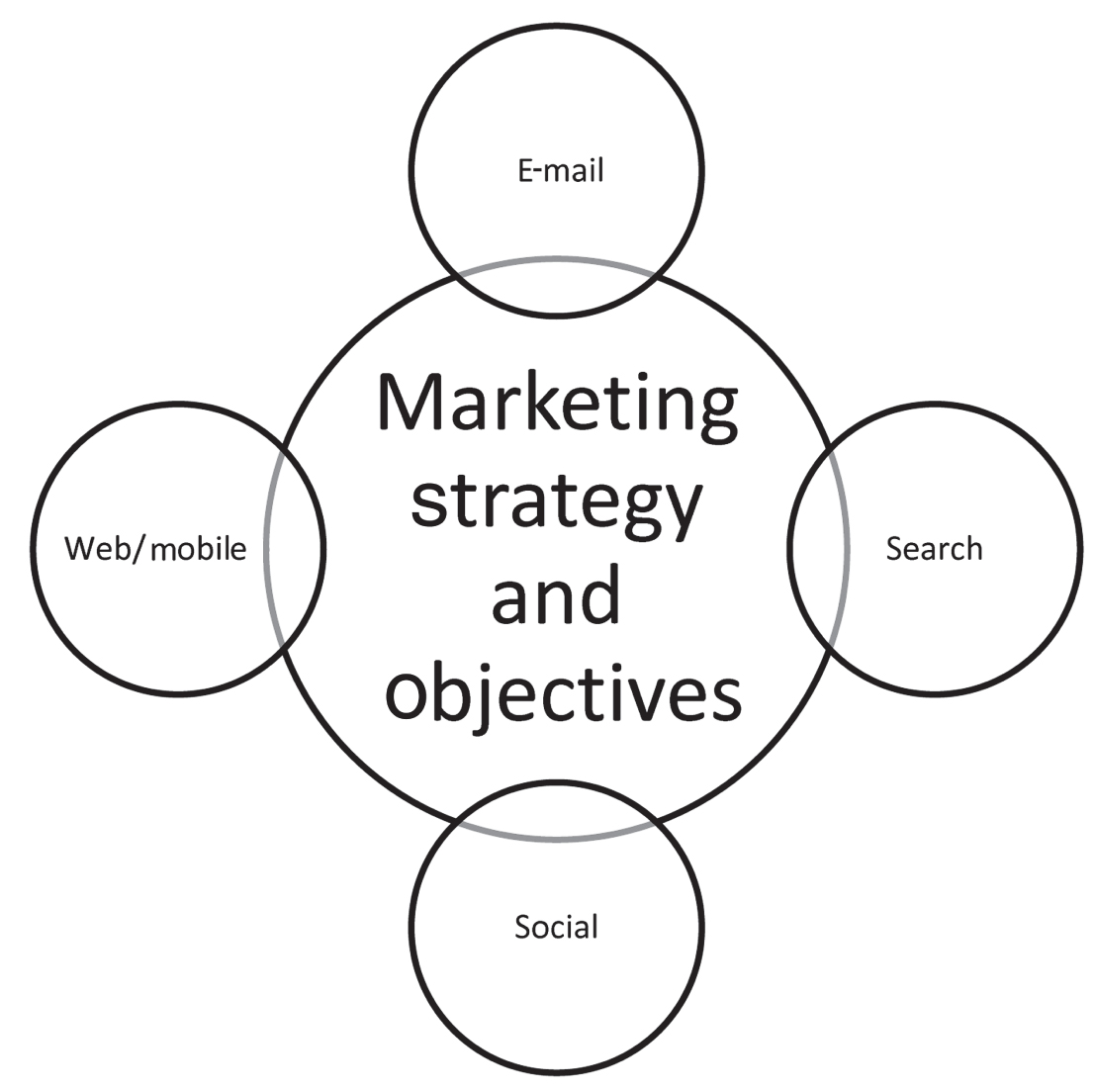
Figure 1.1 The four foundations of digital marketing delivery mix integrated with marketing strategies and objectives
It is worth noting how we arrived at the point where digital marketing is now one of the proper occupations of the executive suite. Today marketers are concerned not only about digital marketing but increasingly about the analytics to gauge their effectiveness. However, many companies struggle to staff their organizations with the basic skills needed in critical areas such as content marketing and video production.2 Although marketing has always been an important and sometimes overlooked occupation in a corporation, digital marketing screams for the attention of not only the chief marketing officer but the chief executive officer as well. A report by ExactTarget indicated that marketing priorities have shifted to measurement and data, branding, and online conversion rates.3 With the exception of branding, most of these terms were not even considered a part of traditional marketing a few years ago. Now, if you can digitize the information, you can measure it. The increased importance of measurement in marketing has paralleled the increase in the importance of digital marketing.
Terms used to describe the type of marketing we are talking about in this book have evolved in usage over time, with digital marketing currently being the most popular and on an upward trend. When I first started teaching, I taught in an e-commerce program, which emphasized selling products over the Internet. As we know, digital marketing is so much more than selling products; it has come to encompass engagement with our customers across many types of electronic channels. With the use of Google Trends, a wonderful tool for competitive and other types of research we will discuss later in this book, we can see that the term digital marketing has experienced rapid growth and has outpaced the use of other terms to describe what we do as marketers in the modern age.
Speaking of terminology, digital marketing, as a practice, has its basis in direct marketing, which required a customer database to track and measure customer response. This marketing database later became crucial in the development of the concept of interactive marketing. Interactive marketing was a term that originated in the mid-1990s to capture and describe the fact that marketing was now a two-way conversation4 and not just the one-way communication of the mass media world. Interactive marketing also required the use of a database that was developed by direct marketers, most importantly to address the individual customer in a relevant fashion. Along the way, Internet marketing came to mean using the Internet to facilitate the marketing process (see Figure 1.2).
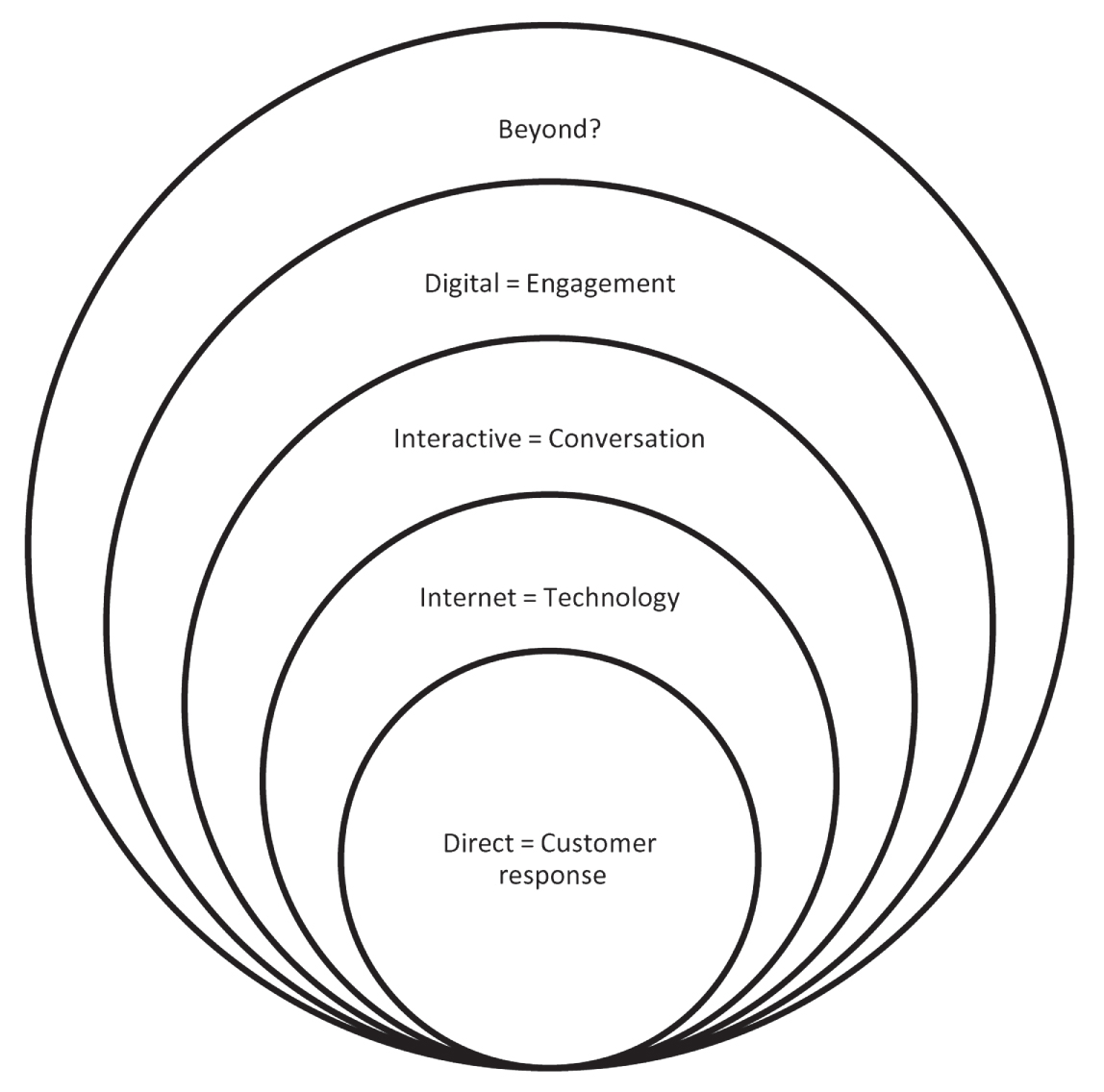
Figure 1.2 The evolution of marketing terminology from direct communication to engagement
The goal of interactive marketing as originally theorized by Dr. John Deighton was that marketing would become a “conversation.” What Deighton and others did not foresee was the rapid expansion of the marketing conversation and the shift in control of the process from the marketer to the customer.5 In fact, digital marketing can be defined as using any digital technology to facilitate the marketing process, with the end goal of facilitating customer interaction and engagement.6,7
Taking all these trends into account, Figure 1.2 shows how the term digital marketing has evolved from a process of response measurement to conversation to engagement. Engagement will be discussed in a later chapter, but in short it means that customers are involved with the brand and creating and developing their own content around the brand. What will happen beyond engagement and how it will be named is anyone’s guess. However, if I had to guess, I would predict a continued trend toward less control by the marketer and more control by the customer, aided and abetted by marketing technology that will be enabled to make choices for the marketer.
Digital marketing includes the ability to interactively communicate with customers through electronic channels, such as the web, e-mail, smart devices such as phones and tablets, and mobile applications. The four most recognized techniques of digital marketing are social, mobile, analytics, and e-commerce.8
These digital technologies that form digital marketing can include Internet tools such as search engine marketing and social media, customer databases, and the like. Even print processes, which now rely on digital technology, can be included broadly in this definition. As noted above, digital marketing also includes measurement and the process of customer engagement. An interesting question is, “Is all marketing digital marketing now?” Certainly, digital marketing is getting the attention of CMOs, although most of them do not think their teams are digitally ready or have the necessary skills.
For our purposes, it is useful to take a step back and realize that there have been several underlying trends that have made the development of digital marketing management a proper occupation of the executive suite. Without the convergence of these trends, shown in Figure 1.3, we would likely be looking at marketing as a different type of occupation and perhaps less relevant to the executive suite. These trends are the revolution in technology, the revolution in marketing thought, and the revolutions in communication and distribution channels.
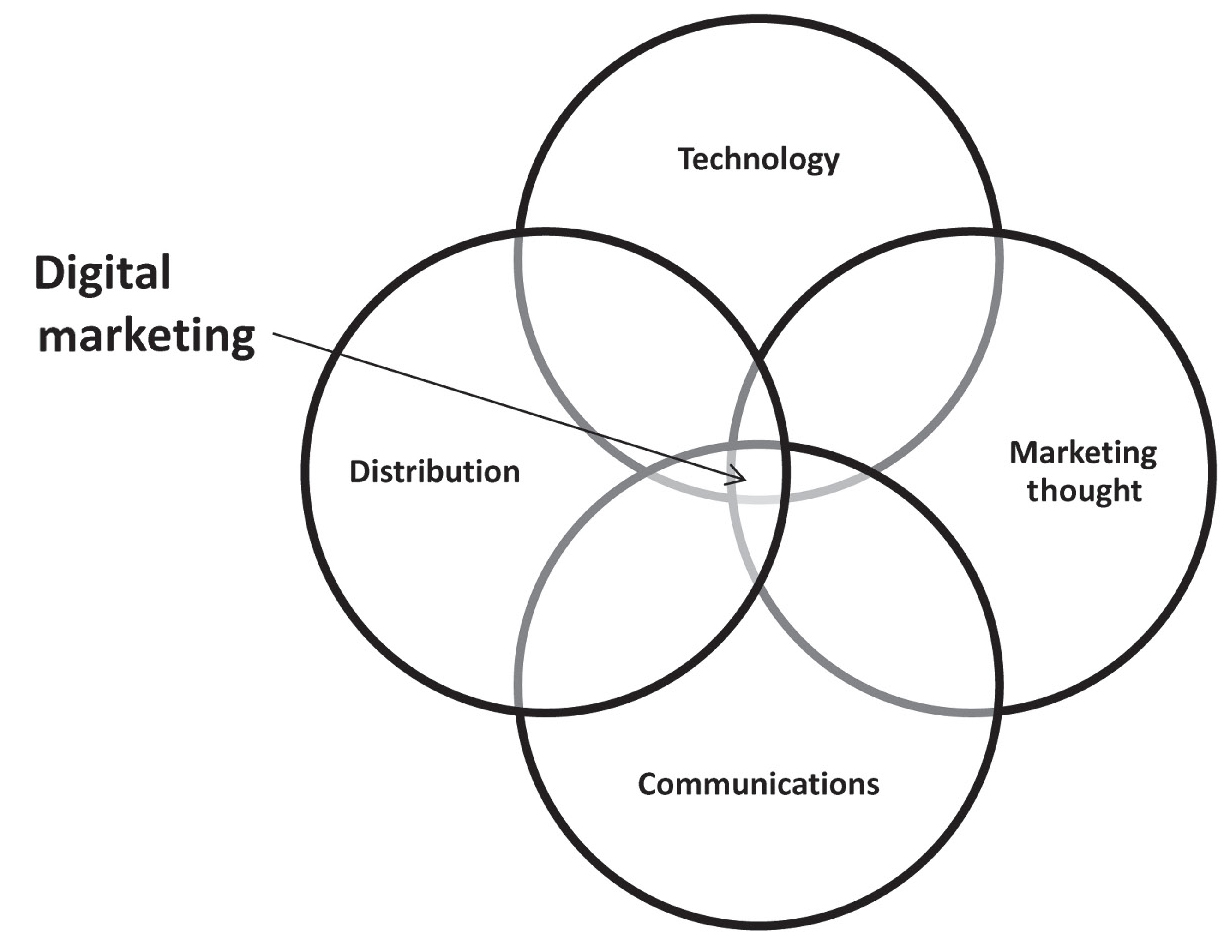
Figure 1.3 Revolutionary trends contributing to digital marketing
Several technologies together have facilitated the rise of digital marketing. Technologies that will be addressed here are the Internet, browsers, widespread computing, and database technology. First, the commercialization of the Internet made the technology widely available to most consumers. The Internet was developed for government use in the early 1970s by the Defense Advanced Research Projects Agency (DARPA) and used primarily for the transfer of large data files and the facilitation of communication among scientific researchers. In those days, most individuals did not have access to this vast network of information. It is useful to think of the Internet as exactly what the name implies, a network which is interconnected through technology. According to network theory, many relationships can be visualized by their relationship as nodes on a network. These nodes are represented usually as circles and the interrelationships between the circles as lines.
Almost anything can be represented by the nodes on a network. Much of social network theory represents individuals on the network as nodes and the lines represent the connections between individuals. In telecommunications theory, the nodes represent areas on the network where information is processed before moving on to another “node.” Nodes tell us how our cell phones get information from one point to another as well as how information is communicated from one person to another. In Figure 1.4, Sarah is “centric” in that she knows everyone but not everyone in the network knows each other. The dark lines represent strong “ties” or relationships and the lighter lines represent weaker relationships.
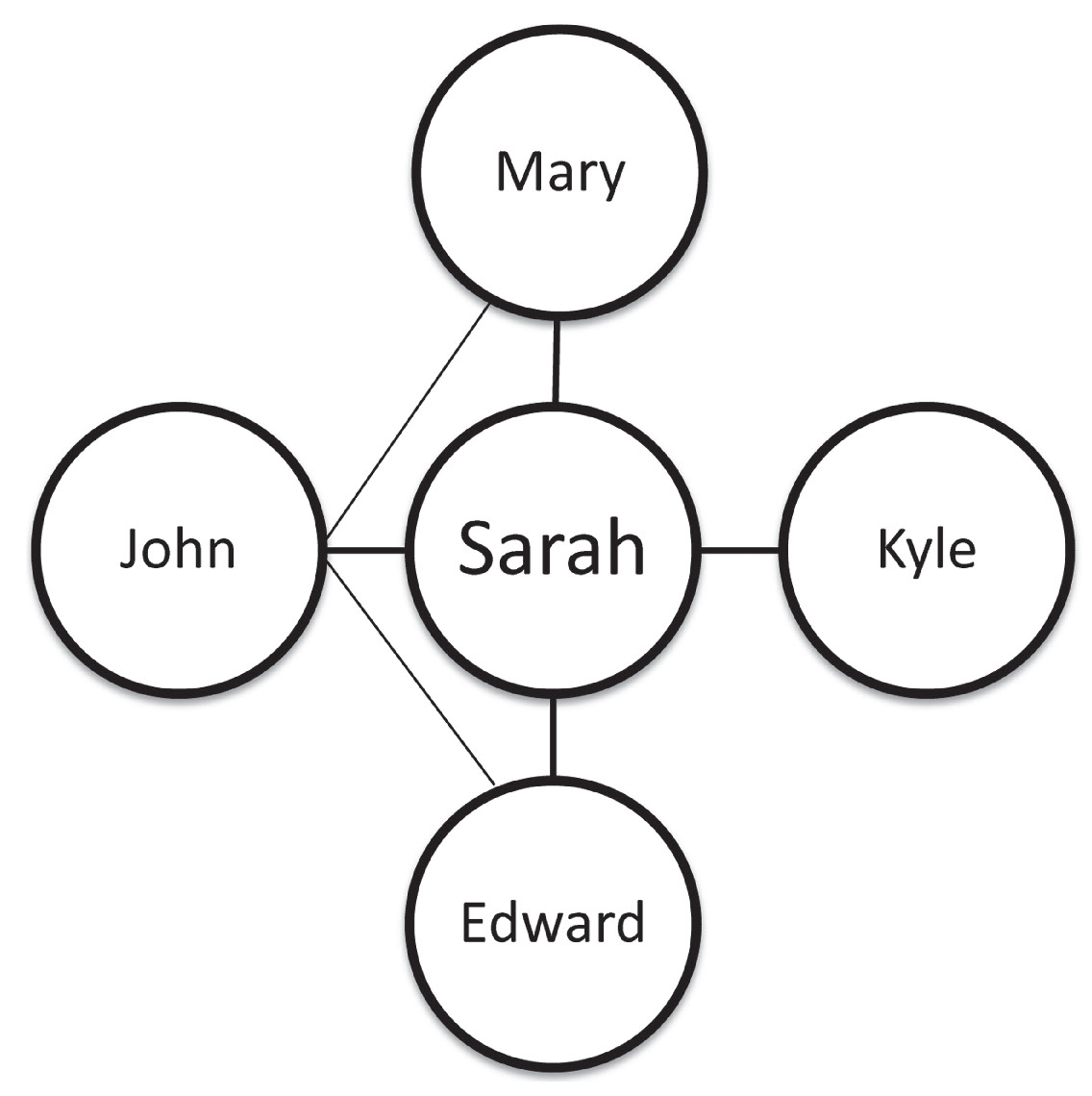
Figure 1.4 One way of representing network relations, nodes, and ties
Networking theory is a powerful tool for the representation of information and how it travels. Networking theory also helps to explain the phenomenal growth of the Internet as a marketing tool. The browser is a way of navigating the nodes of the Internet and is another technological innovation that spurred the growth of digital marketing. When the IT people at the university where I was teaching in 1995 installed one of the first browsers on my computer, I said to myself, “This changes everything.” Because I am a business professor, what I meant when I said that everything would change was that “commerce” would change. And everything did change and is changing, more rapidly every day. What I recognized when the browser was put on top of a vast network connecting businesses and individuals was that all of a sudden it became easier to navigate the Internet. In fact, Internet technology was adopted more quickly than any previous technology, in part because of the effects of networks and how they facilitate growth and information sharing. It has taken less than 20 years for the Internet to reach 40 percent of the world’s population, perhaps the most rapid growth of any technology except the mobile phone, which is also related to Internet usage. Currently, nearly 60 percent of the world’s population has access to and uses the Internet for various applications. Penetration rates range from almost 90 percent in North America to nearly 40 percent in Africa. 9
Browser technology, software programs that allow the user to navigate the web, also facilitated the growth of the Internet. The first browser was called Mosaic and was developed by programmers at the University of Illinois. Other browsers rapidly followed, with the most popular today being Microsoft’s Bing, Google Chrome (largest market share), and Mozilla Firefox. Of these three, only Mozilla remains as a not-for-profit company. The other firms recognized the vast commercial potential of the Internet.
In the early days of web browsers, the Internet was the domain of the young, with the typical user being the 20-something male who spent the vast majority of his time “surfing” the net. Interfaces were simple. Online chat forums are a good example of a simpler form of communication. Forums and discussion boards are a way for individuals interested in a particular topic to interact on the Internet and keep a record of their discussions. This type of interface is used to this day, but other means of communicating on the Internet have become more prevalent. The proliferation of devices with which to access the Internet also facilitated its growth. The availability of desktop and laptop computers and now mobile devices, thin clients, and notebooks means that the Internet is everywhere and literally at everyone’s fingertips. Of course, the Internet would be nothing without the data behind it. Database technology is used to capture Internet transactions, place advertisements, and analyze browsing history, all leading to a more satisfactory web experience targeted to the needs of the individual customer.
The growth of the Internet would not have been possible without data processing and analysis. Just look at what happened in the bookselling industry. Amazon.com was developed as an online firm and had the ability, through a process known as “collaborative filtering” of the orders its customers made from the beginning, to make recommendations online that were based on customer preferences. Offline booksellers such as Barnes and Noble, and the now defunct Borders, struggled to differentiate themselves in the marketplace and many ultimately failed. Amazon started with an excellent database management system and did not have to play “catch up” to discover its customers’ preferences and identities and now controls both the bookselling and publishing industries. Barnes and Noble developed its loyalty program to catch up and start collecting customer information. Perhaps the program has slowed the decline in sales since 2012, even if it has not reversed the downward trend. Barnes and Noble’s loyalty program has aided with customer retention and club members spend more than the average customer.10 The loyalty program data also provides valuable customer insights.
The Revolution in Marketing Thought
While technology was changing, so was the way marketers were thinking about marketing (see Figure 1.5). There has been a clear evolution from mass communication to two-way communication to interactive forms of communication. While changes were happening that allowed us to communicate directly with customers more easily, marketers were beginning to be frustrated with the traditional mass marketing approach. Mass marketing started in the 1900s and mass advertising developed with the advent of another technology, the television, in the 1950s. In mass advertising, while we might do some rough marketing segmentation (breaking customers into groups with similar characteristics) in general, the message is the same for all consumers. In direct or two-way communication, we acknowledge that customers have true differences and customize offers to them in such a way that demonstrates we understand that uniqueness. For example, a catalog marketer might send different versions of catalogs to different targeted segments. Direct marketing therefore formed the roots of Internet marketing because of the direct marketer’s use of customer databases to create a two-way form of interaction with the customer.
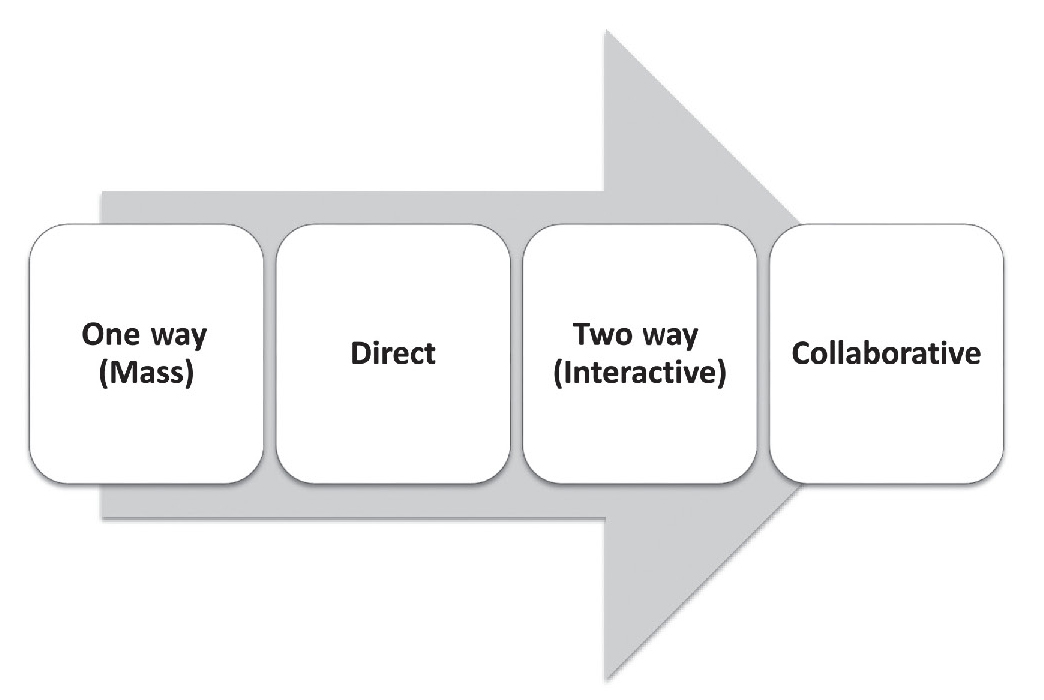
Figure 1.5 Progression of communications in marketing and advertising
In true interactive marketing, we take into account what the customer has said, remember what was said, and demonstrate in our next offer to the customer that we remember what was said. We eagerly anticipate the response from the customer so we can tailor our next communication. The definition of marketing has changed from a marketplace based on a one-time exchange to a conversation that is expected to be ongoing and evolving. Rogers and Peppers popularized this notion of interactive marketing, calling it one-to-one marketing in their original book.11 The two hypothesized a future which only later became technically possible, in which customer communications would be different for each customer based on their preferences. For this type of communication to occur, we needed the technological developments of the Internet, browsers, databases, and pervasive computing discussed earlier in this chapter.
Marketers were then able to respond to customers in a way that demonstrated that they had taken into account the customers’ past history and expressed preferences. To do so they used marketing concepts such as personalization and customization. Personalization means that we use information about the customer such as name, address, and other preferences in our communications with the customer. Customization means that a product is actually built for that customer based on their preferences.12 True customization is quite difficult to master. Think of a customized suit which requires measuring, crafting, and fitting to the individual. Mass customization, on the other hand, is quite easily handled by the technology used to facilitate the Internet. Mass customization allows the customer to select from certain preprogrammed or preset options to develop a product suited to their needs. An example of mass customization would be Nike.com, which allows the customer to create a shoe based on certain parameters, which is unique to them. Another example is modelmyoutfit.com, which allows the retail customer to see what clothes would look like on their body type.
Both personalization and customization are firm capabilities that are related to the development of the database within the corporation. The database allows the firm to develop the understanding of the customer to engage in these activities. This view of the customer is often called the 360-degree view. In other words, the firm knows about the customer, the name, the transactions history, and other supplemental or enhanced data. This data is critical to developing a marketing program that is “one to one” or targeted for the individual customer. Data means that the focus shifts from the process of marketing management from the firms’ point of view to a “customer-centric” focus. A marketing program that is essentially customer-centric is focused on the needs, wants, and desires of the customer and not those of the company. This customer centricity leads to customer engagement and interaction of digital marketing, making the next step of marketing communications collaboration.
Similarly, whereas marketing efforts earlier sought to attract, acquire, and retain customers, we now seek a fourth objective—to engage customers once we have them (see Figure 1.6). We will speak more about engagement later in the book, but for our purposes now, engagement means creating customer relationships where there is a true give and take and where the customer is a partner and participant in marketing and product efforts. An example would be the difference between the old-style airline loyalty programs where users collected points and the innovative programs such as those at KLM (Royal Dutch Airlines), which uses social media engagement for everything from customer information dissemination to the decision to open new markets.13
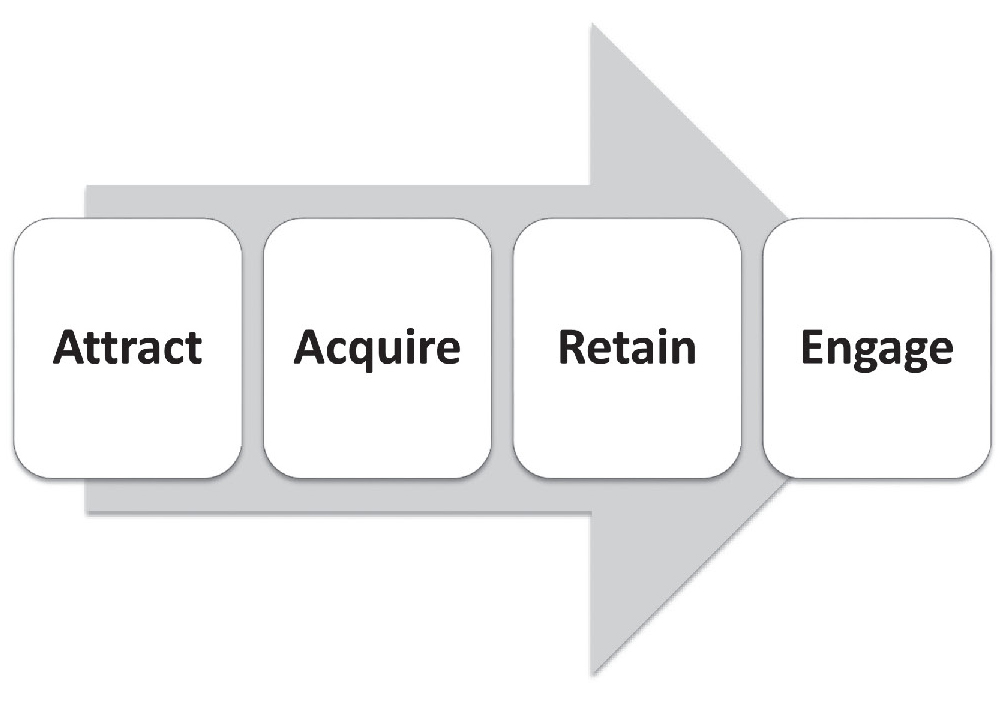
Figure 1.6 Updated customer relationship management objectives
As we can see, at the same time that technology was developing that enabled the collection of data about the customer and its rapid communication over the Internet, marketing thought was developing to the point where marketers wanted to communicate with the customer in ways that went beyond mass communications and even direct communications.
The Revolution in Communications/Distribution
It is unlikely that the evolution of digital marketing would have been possible without the development of communications and distribution channels. Technology meant that digital communications were increasingly possible, creating new methods of communication with the customer. Evolving from traditional forms of direct communication with the customer (sales, phone, fax, direct mail), e-mail was the first digital channel to emerge in the 1990s. This channel allowed marketers to communicate with the customer directly but also to more quickly respond to information gained from the customer. E-mail marketing tools also provided easy access to data about response rates and the effectiveness of varying marketing offers.
Since that time, there has been a proliferation of digital channels of communication, including social networks, text messages, RSS feeds, and so on. Communications have proliferated to the point where we can communicate with the customer at every point in the customer lifecycle and decision-making process in the manner in which the customer wishes to be communicated, which is true one-to-one marketing. In this time period, a media evolution, or more accurately a media revolution, has occurred where the types of media available to the marketer have exploded. Figure 1.7 shows how much the world of direct marketing communications has changed in just over a generation, with implied challenges for marketers. From a few simple channels, we now have more ways to reach the customer than ever before, including search and social media, which can in some sense be seen as direct communication. Indirect media has evolved in an even more fragmented fashion, from simple TV, radio, print, and display advertising in the 1990s to a list that includes the following fragmented media channels:
- TV
- Radio
- Display advertising, including behavioral
- Websites
- Search, paid, and organic
- Online display
- Landing pages/Microsites
- Online video/Picture sites
- Affiliate marketing
- Webinars
- Blogs
- RSS
- Podcasts
- Wikis
- Social networks
- Mobile web/Apps
- Social media ads
- Virtual worlds
- Widgets
- QR codes/Alternatives
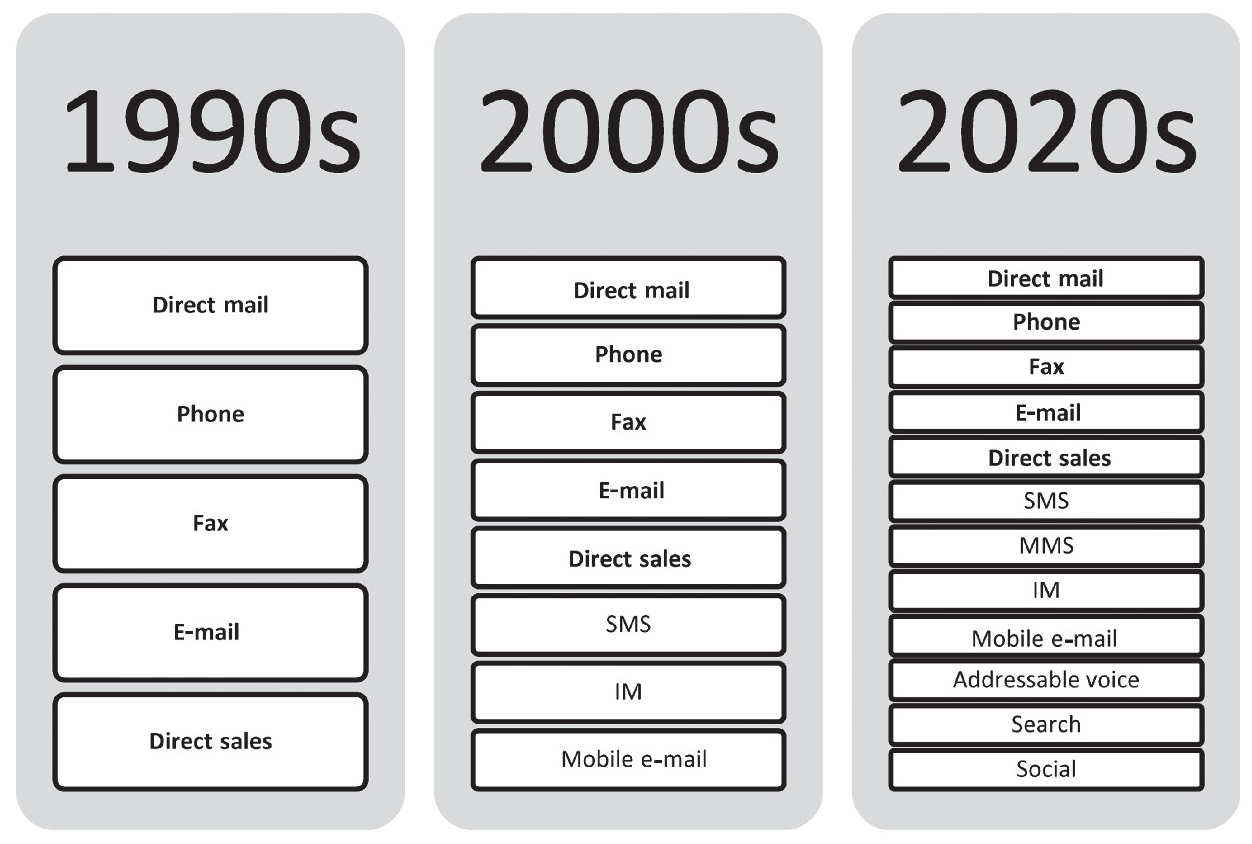
Figure 1.7 The evolution of direct media
Another key development that facilitated Internet commerce and the rise of digital marketing management was the rise of distribution networks in the form of Federal Express, UPS, and other improvements in delivery service and technology. These networks meant that orders could be delivered quickly enough and door-to-door in such a manner that customers find ordering on the Internet an attractive alternative to brick-and-mortar shopping experiences. Without these changes, Internet shopping experiences would be considerably less appealing.
All these changes and forces resulting in the rise of digital marketing have created a situation where customer acquisition and relationship management and development are a continuous process, and one not always in the control of the marketing manager. Along each step of the way as we work to manage the marketing process, we must develop clear actions for every marketing step. As Figure 1.8 shows, objectives can be categorized as conducting research, raising awareness, branding, generating leads, acquiring customers, customer management and communication, up-selling and cross-selling, retention and loyalty, and, finally, the identification of customers who can be brand advocates. Technology plays a role each step of the way but is not the main focus of the company. As we shall see in Chapter 2, to develop an effective digital marketing strategy, the firm must first consider how it creates and delivers value.
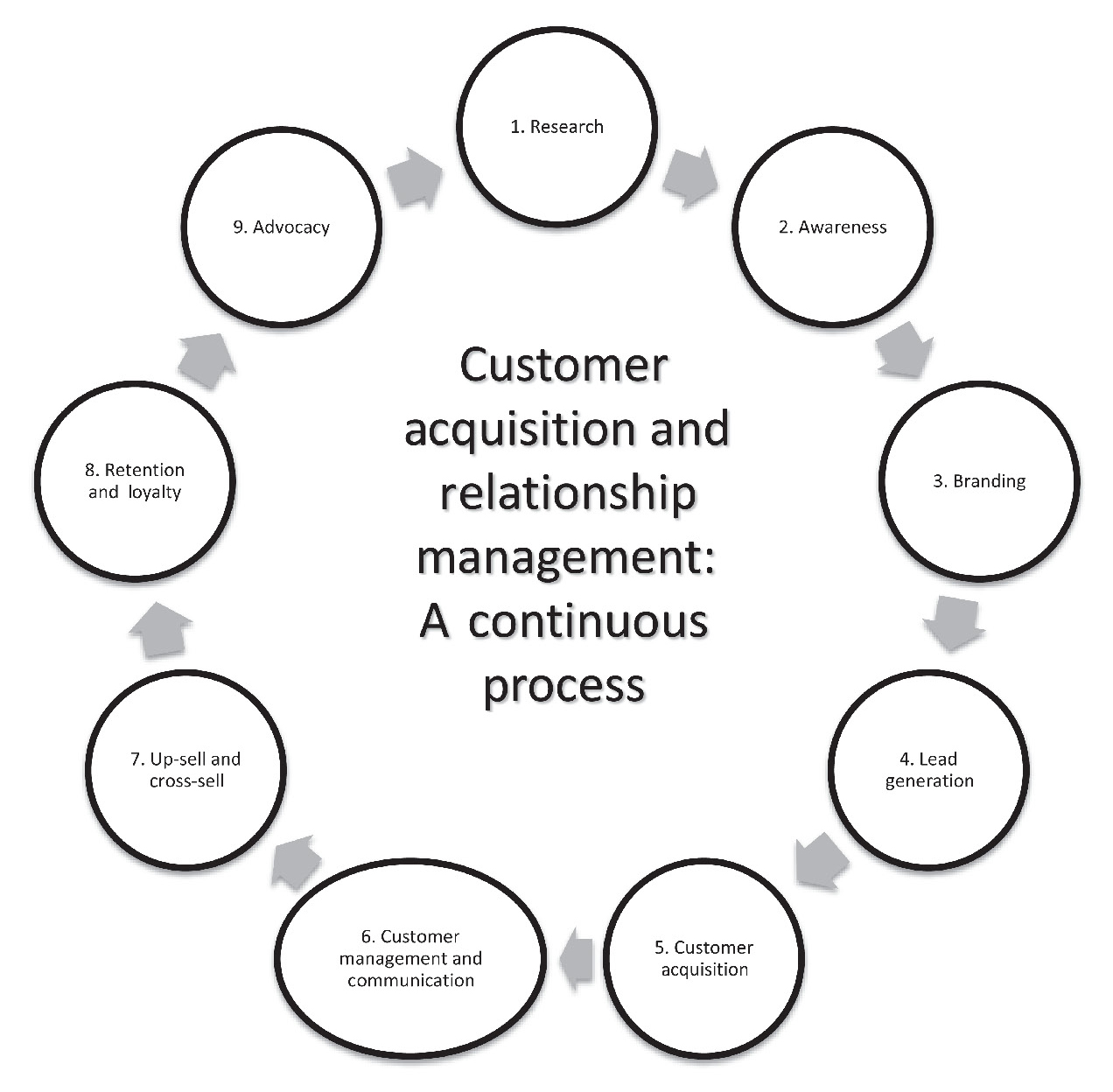
Figure 1.8 Customer acquisition and relationship management: A continuous process
What to Do Next after Chapter 1
- Select a major customer relationship management objective(s): attract, acquire, retain, and engage for your firm or another (Figure 1.6).
- Develop a list of detailed objectives for that objective and for the relationship management process (Figure 1.8).
- Define how about defining website objectives and how they might align with stated marketing objectives.
Discussion Questions
Discussion 1.1: Discuss the role the Internet plays in the lives of consumers and businesses. Has it changed the way businesses operate in any significant fashion? Can you give examples of the impact of the Internet in either B2C or B2B markets? Give an example of a company that has significantly changed its business practices because of the Internet.
Discussion 1.2: What do you think the future is for customized products? Think of an example of a product that could reasonably be customized and explain why the target customer would find value in the customization. Find an example of product customization online and discuss whether or not you think it will be successful.
Discussion 1.3: Are there other types of customer relationship management objectives that should be added to Figure 1.8? How relevant is customer relationship management (CRM) if the customer is increasingly in charge of the marketing “conversation”?
Discussion 1.4: How do you think digital marketing will evolve? Will there be more types of media in the future and what will be the goals of managing these types of media?
Glossary
Customization: Making each product uniquely for every customer.
Digital marketing: Using any digital technology to facilitate the marketing process, with the end goal of facilitating customer interaction and engagement.
Interactive marketing: Remembering what the customer tells us so marketing is a conversation.
Internet marketing: Using the Internet to facilitate the marketing process.
Mass customization: Using a predefined set of product features to allow customers to develop their own product.
____________
1D. Zahay-Blatz. 2013. “Four Foundations of the Digital Marketing Mix,” New Interactive Marketing Updates. http://niuinteractivemarketing.blogspot.com/2014/02/four-foundations-of-digital-marketing.html, (accessed October 13, 2019).
2Tom Treanor. 2019. Digital Marketing 2019: 10 Top Skills Your Digital Marketing Team Needs. https://blog.treasuredata.com/blog/2019/01/03/the-top-10-digital-marketing-skills-your-team-needs-in-2019, (accessed April 20, 2020).
3ExactTarget. 2014. “2014 State of Marketing,” White Paper. https://brandcdn.exacttarget.com/sites/exacttarget/files/2014stateofmarketing.pdf, (accessed January 20, 2020).
4J.A. Deighton. November–December, 1996. “The Future of Interactive Marketing,” Harvard Business Review 74, no. 6, pp. 151-60.
5A. Deighton and L. Kornfeld. Winter, 2009. “Interactivity’s Unanticipated Con-sequences for Markets and Marketing,” Journal of Interactive Marketing 23, no. 1, pp. 2-12.
6Gartner. 2014. “It Glossary,” Gartner. https://blogs.gartner.com/it-glossary/digital-marketing-2/, (accessed October 13, 2019).
7Technopedia. 2014. “Digital Marketing.” https://www.techopedia.com/definition/27110/digital-marketing, (accessed October 13, 2019).
8Gartner. 2014. “Key Findings from U.S. Digital Marketing Spending Survey, 2013,” Gartner for Marketing. http://www.gartner.com/technology/research/digital-marketing/digital-marketing-spend-report.jsp, (accessed October 13, 2019).
9Internet World Stats. 2019. “Internet Growth Statistics.” https://www.internetworldstats.com/emarketing.htm, (accessed January 7, 2020).
10B. Unglesbee. 2019. “Can a New Owner Rewrite the Story of Barnes & Noble?” https://www.retaildive.com/news/can-a-new-owner-re-write-the-story-of-barnes-noble/557310/, (accessed January 15, 2020).
11D. Peppers and M. Rogers. 1993. The One to One Future (New York, NY: Doubleday).
12D.L. Zahay and A. Griffin. 2003. “Information Antecedents and Consequences of Personalization and Customization in Business-to-Business Service Markets.” Journal of Database Marketing 10, no. 3, pp. 255-271-326.
13 Van der zee interviewed by Kane. 2014. “Communication with Customers through Social Media Instead of by Phone is Becoming Standard at Global Airline KLM.” MIT Sloan Management Review.